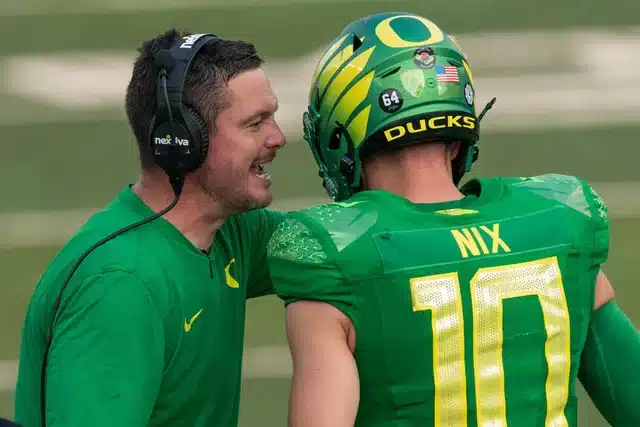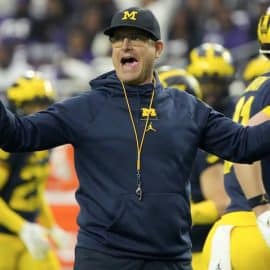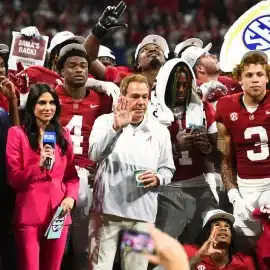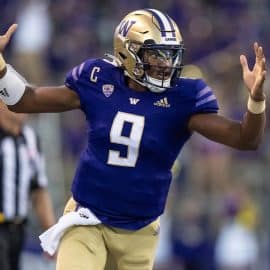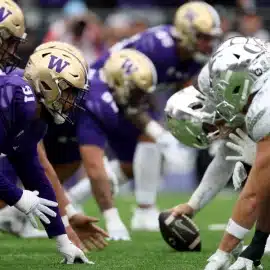There is no good reason that major NCAA football has not utilized helmet communications from coaches to offensive and defensive captains. It now appears the new sign-stealing scandals will finally bring helmet comms to college football.
The topic of sign-stealing has captured the spotlight in college football, but significant changes could be on the horizon as the NCAA adapts to modern technology and processes. During the summer, the NCAA passed a resolution allowing the use of communication devices during non-College Football Playoff bowl games, and recently, it was reported that these games will also permit video reviews via tablets on the sidelines.
NCAA approved helmet comms for college football bowl games https://t.co/26Z0Fil6y3 via @freep
— Pradheep J. Shanker (@Neoavatara) November 8, 2023
Interestingly, the initiative for introducing communication devices came from the Big Ten, which moved to implement these changes before the start of what has been described as a “Cold War” in the conference regarding sign-stealing.
The NCAA Has Shot Down Helmet Comms Before
Previously, the NCAA Rules Committee didn’t approve helmet communications for the regular season when proposed by the Big Ten. However, it was decided to allow them on a trial basis during non-Collegee Football Playoff bowl games. This trial will help gauge the possible impact of helmet communications, ensuring a level playing field if other conferences adopt the technology.
The use of helmet communications will be contingent on the agreement of both teams and their respective league offices. The NCAA will evaluate data collected during the trial period before deciding whether to make helmet communications a permanent fixture in college football.
It Works Perfectly In The NFL
While the NFL has ample experience with helmet communications, adopting such technology in college football could open up new possibilities. This development is part of the ongoing modernization of college football, and the coming summer will likely be a pivotal time for the NCAA as it explores the logistics and potential rules surrounding helmet communications, video review, and their future in the sport. Given the ever-evolving landscape of college football, these changes could become a matter of urgency.
NFL analyst Louis Riddick pointed out that sign stealing was a massive part of the NFL prior to the switch to helmet communications.
🎥Video: Louis Riddick calls out the NCAA’s absurdity around sign stealing rules. #Michigan is expected to be disciplined today for sign stealing.
“Everyone used to do this in the #NFL prior to direct coach to helmet communication”
“The NCAA rules are inconsistent”
Wdyt? https://t.co/FlrZitAdsu pic.twitter.com/5jl4N3BCNT
— Mike McDaniel (@MikMcDaniel) November 8, 2023
As long as every team can have access to the same level of helmet comms, this is a no-brainer for the NCAA. We’ve seen how well this works in the NFL for over a decade now, and if sign stealing is going to turn into such a massive controversy, the option to have helmet comms takes those worries right out of the conversation.
Add The Sports Daily to your Google News Feed!
